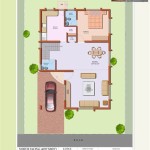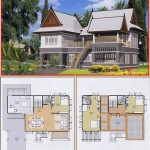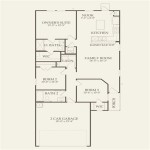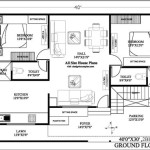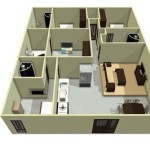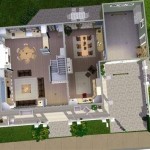Piling House Plans With Elevator And Garage: A Comprehensive Guide
Elevated or piling house plans, often constructed using pilings, piers, or stilts, are gaining popularity, particularly in coastal areas, flood zones, and regions with uneven terrain. Incorporating an elevator and garage into these designs adds significant functionality and accessibility, transforming them into safe, convenient, and valuable properties. This article provides a detailed exploration of piling house plans with integrated elevator and garage features, examining their benefits, design considerations, construction aspects, and potential challenges.
Benefits of Piling House Plans
Piling house plans offer several distinct advantages over traditional foundation types. The primary benefit is protection from flooding. By elevating the living space above the predicted flood level, these structures mitigate the risk of water damage during heavy rainfall or storm surges. This is crucial in coastal areas and floodplains where traditional homes are vulnerable. Furthermore, elevated structures improve ventilation beneath the house, reducing moisture buildup and preventing wood rot and mold growth, which can significantly extend the lifespan of the building. The open space beneath the house can also be used for parking, storage, or recreational purposes, maximizing the usable area on the property. In areas with unstable soil, pilings provide a deep, stable foundation, anchoring the house securely to the ground below the problematic surface layers. This is particularly important in regions prone to earthquakes or landslides. Environmentally, piling foundations often have a smaller footprint compared to traditional slabs, minimizing disturbance to the surrounding landscape. This is increasingly important in environmentally sensitive areas.
The elevation also offers improved views, as the house sits higher than surrounding structures or vegetation. A piling foundation reduces the impact of insects and rodents on the living spaces, creating a healthier and more comfortable environment. Finally, a piling house plan with added features such as an elevator can significantly improve the resale value of the property, adding a premium to the overall cost of construction and initial investment.
Integrating Elevators and Garages into Piling House Designs
The integration of an elevator and a garage into a piling house plan enhances accessibility and convenience, particularly for homeowners with mobility issues, elderly residents, or families with young children. However, incorporating these features requires careful planning and design considerations to ensure structural integrity, functionality, and compliance with building codes.
Elevator Integration: Integrating an elevator into a piling house requires careful planning to ensure it can meet building code requirements. There are generally two main types of elevators for residential applications: hydraulic and traction elevators. Hydraulic elevators are typically more cost-effective for low-rise applications, while traction elevators offer smoother and faster operation but are often more expensive. The elevator shaft needs to be structurally integrated into the house design, ensuring it is adequately supported by the piling foundation. The location of the elevator should be strategically chosen to provide easy access to all levels of the house. This may involve placing the elevator near the main entrance or in a central location within the floor plan. Accessibility considerations must be paramount, ensuring that the elevator car is large enough to accommodate wheelchairs or mobility aids. Safety features such as emergency brakes, backup power, and communication systems are essential to ensure the safety of the occupants.
Garage Integration: Incorporating a garage into a piling house plan typically involves utilizing the space beneath the elevated living area. The garage design needs to address clearance requirements for vehicles and provide adequate space for parking and storage. The garage floor should be properly graded to allow for drainage and prevent water accumulation. The garage doors need to be properly sized and insulated to provide security and energy efficiency. Structural support for the elevated house must be carefully considered when designing the garage. In some cases, additional pilings may be required to support the weight of the garage. Access to the garage from the living area should be convenient and direct, ideally through a covered entryway. Security features such as lighting, surveillance cameras, and secure garage doors are essential to protect vehicles and belongings. The placement of the garage should be considered to harmonize with the overall aesthetic of the house and the surrounding landscape.
Both the elevator and garage integration require careful consideration of local building codes and regulations. Compliance with accessibility standards, fire safety requirements, and structural integrity standards is crucial.
Key Design Considerations and Structural Aspects
Designing a piling house plan with an elevator and a garage involves several key design considerations and structural aspects that must be carefully addressed to ensure the safety, stability, and functionality of the building.
Foundation Design: The foundation design is critical for the stability of a piling house. The pilings must be properly sized and spaced to support the weight of the house, including the elevator and garage, and withstand wind and seismic loads. The depth of the pilings should be sufficient to reach stable soil layers below the surface. The pilings can be made of wood, concrete, or steel, depending on soil conditions and local building codes. The connection between the pilings and the house frame must be strong and durable to prevent movement or separation. The spacing of the pilings should be optimized to distribute the load evenly and minimize stress on the structure.
Structural Framing: The structural framing of the house must be designed to support the weight of the elevator, garage, and living spaces. The framing should be made of durable materials such as wood or steel. The framing must be properly braced to resist wind and seismic forces. The framing should be designed to accommodate the elevator shaft and garage doors. The framing should be properly insulated to provide energy efficiency. The framing should be designed to minimize noise transmission between floors.
Elevator Shaft Design: The elevator shaft must be structurally sound and fire-resistant. The shaft must be properly ventilated to prevent moisture buildup. The shaft must be designed to accommodate the elevator car and its operating mechanisms. The shaft must be equipped with safety features such as fire dampers and smoke detectors. The shaft must be properly insulated to reduce noise transmission. The shaft must be designed to comply with accessibility standards.
Garage Design: The garage must be designed to protect vehicles from the elements and provide secure storage. The garage floor must be properly graded to allow for drainage. The garage doors must be properly sized and insulated. The garage must be properly ventilated to prevent the buildup of harmful gases. The garage must be equipped with adequate lighting and electrical outlets. The garage must be designed to comply with local building codes and regulations.
Accessibility Considerations: Accessibility is a key design consideration for piling houses with elevators and garages. The elevator should be accessible from all levels of the house, including the garage. The elevator car should be large enough to accommodate wheelchairs or mobility aids. The doorways and hallways should be wide enough to allow for wheelchair access. The bathrooms and kitchens should be designed to be accessible to people with disabilities. The landscaping should be designed to provide accessible pathways and ramps. Accessibility considerations should be integrated into all aspects of the house design.
The design and construction of a piling house with an elevator and a garage requires the expertise of qualified architects, engineers, and contractors. Close collaboration between these professionals is essential to ensure the project is successful. Proper planning, careful execution, and attention to detail are essential to ensure the safety, stability, and functionality of the building.
Addressing Potential Challenges
Constructing a piling house with an elevator and a garage presents unique challenges that need to be addressed proactively. These challenges can range from site-specific issues to regulatory hurdles and budget constraints.
Site Conditions: Site conditions can significantly impact the cost and complexity of construction. Soil conditions must be carefully analyzed to determine the appropriate type and depth of pilings. The presence of groundwater or unstable soil layers can increase the cost of excavation and foundation construction. Site accessibility can also be a challenge, particularly in remote or difficult-to-reach locations. Environmental regulations may restrict construction activities in sensitive areas. Overcoming these site-specific challenges requires careful planning, innovative solutions, and the expertise of experienced professionals.
Regulatory Compliance: Piling houses with elevators and garages must comply with a variety of building codes and regulations. These regulations may include flood zone requirements, accessibility standards, fire safety codes, and structural integrity standards. Obtaining the necessary permits and approvals can be a lengthy and complex process. Compliance with these regulations can significantly increase the cost of construction. Understanding and navigating the regulatory landscape is crucial for the successful completion of the project.
Budget Constraints: The cost of constructing a piling house with an elevator and a garage can be significant. The cost of materials, labor, and equipment can vary depending on the location and complexity of the project. Unexpected issues, such as subsurface problems or unforeseen regulatory requirements, can increase the cost of construction. Managing budget constraints requires careful planning, cost-effective design solutions, and efficient project management. Prioritizing essential features and making informed decisions about materials and finishes can help control costs without compromising the quality or safety of the building.
Maintenance and Longevity: Piling houses, while durable, require regular maintenance to ensure their longevity. Periodic inspections of the pilings, structural framing, and elevator mechanisms are essential. Repairs and replacements should be carried out promptly to prevent further damage. Protecting the structure from moisture, insects, and corrosion is crucial. Implementing a preventative maintenance plan can extend the lifespan of the building and minimize long-term costs.
Addressing these potential challenges requires a proactive and collaborative approach. Working with experienced architects, engineers, and contractors who understand the unique requirements of piling house construction is essential. Careful planning, attention to detail, and a commitment to quality are crucial for the successful completion of the project.

Elevated Piling And Stilt House Plans Coastal From Home

Elevated Piling And Stilt House Plans Coastal From Home

Porches Cottage Piling Foundation Side Entrance Garage Elevator 2395 Sf Southern Cottages

Modern Piling House Plans Design

Elevated Piling And Stilt House Plans Coastal From Home

Shelter Cottage 2466 Sf Piling Home With Elevator

Plan 765042twn 3 Bed Country Cottage House On Pilings With Elevator 2409 Sq Ft

Stilt Piling House Plan 3 Bedrooms 2 Baths 1360 Sq Ft Topsider Homes Pge 0308

Elevated Piling And Stilt House Plans Coastal From Home

Coastal House Plans Sdc

